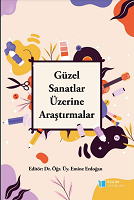
Strategies of Early Modern Royal Representation
The representation of Sigismund II Augustus is an interesting example of royal image-making in the context of Eastern European Renaissance. His childhood was decisive for the formation of his future representation. In my article, I argue that the image of Sigismund Augustus as an erudite ruler corresponded to the artistic and humanist requirements of the sixteenth century and was constructed during his childhood and youth under the influence of his parents and his mother’s milieu. Sigismund’s representation highlighted his descent from two noble families, Jagiellon and Sforza, his classical education, and the hopes for his future successful reign. The royal heir’s image was disseminated through visual (arrases, coins, medals, and portraits) and textual (literature, poetry) means by a range of diverse actors that included his closest family, poets, writers, and artists of early modern Poland and Lithuania. Sigismund Augustus’ self-fashioning persisted throughout his reign and outlived him, but its crucial foundations were constructed in his childhood and youth.
More...







